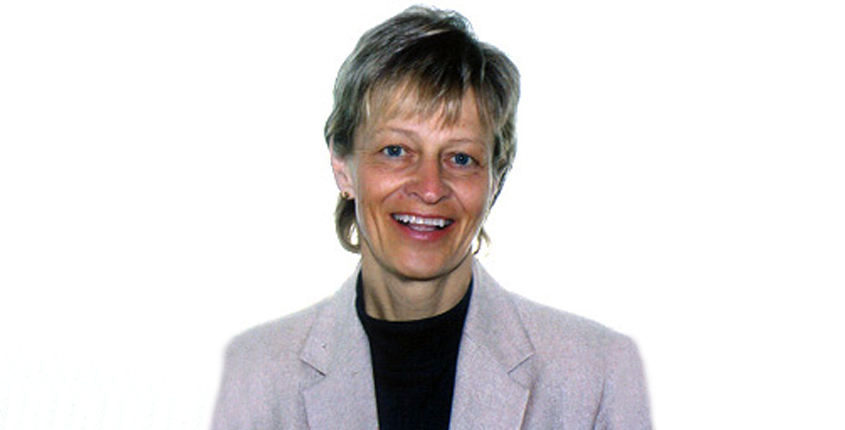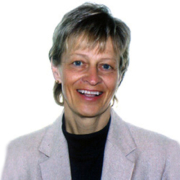Dr. Jane Moran continues to blaze trails for Canada
There she goes again, blazing trails. It’s Dr. Jane Moran, and this time, she’s just been appointed to the International Olympic Committee’s Medical Commission’s Games Group as its winter sport representative.
She’s already known as the chairperson of the International Skating Union’s Medical Commission, an emergency room physician, a sports medicine doctor, a former member of the board of directors for Skate Canada (1999 to 2009), and a veteran doctor of six Olympic Winter Games: Albertville, Lillehammer, Nagano, Salt Lake City, Turin, and Vancouver (and in another few months, Sochi, too). Not to mention that Dr. Jane was also the physician for the 2010 Torch Relay run across Canada where she was guarder of the flame, confidant to the masses, patcher and healer of lacerations and head bumps and all sorts of folk with tears in their eyes.
That’s Dr. Jane Moran in a nutshell. Who could have guessed that this woman from small-town Ontario could ascend to the highest annals of sport in her profession? Well yes, you could have. As number 5 in a family of eight children (two girls, six boys), Moran frequented a rink right across the street from the family home in Walkerton, Ont. Her father, Joe, was a businessman there (Moran’s Farm Equipment), a mayor of the town for a time, and a lover of sport. In the midst of all this, Moran forged her own way.
Her father’s coaching philosophy centred on the idea, perhaps outrageous at the time, that good skaters made good hockey players. So all eight children took skating lessons at that little community rink. Moran’s sister, Mary Jo, the youngest of the eight, was an ice dancer at one point during the era of Tracy Wilson and Rob McCall. But Moran and all of her six brothers played hockey. “I was not at all graceful enough to be a figure skater,” said Moran on the eve of leaving for a WADA conference in Johannesburg, South Africa. “I was actually a much better hockey player.”
Consider that this was back in the early 1960s. There were no girls’ teams then. Moran played on a boys’ team until she was 10. She was set to go to a competition in Brampton, Ont., but held at home by mother Marie, who didn’t want her to go. Her oldest brother was coach of the team, and when he made it to Brampton with his Bruce County boys, he phoned home: “You’ve got to send her,” he told his mother. “They’ve all heard that she plays and everyone has been waiting to see this girl that plays hockey.”
So she did. Off she went, with her ponytail hanging out of her helmet, and mixed it up with players like Mark Howe, son of Gordie Howe. She was the only girl at the tournament amid “999 boys,” she said. This was well before the days of Justine Blainey, who won a spot on a boy’s team in the Metro Toronto Hockey League back in 1981 but was refused play because the league didn’t allow female players. Even the Ontario Human Rights Code at the time allowed sexual discrimination in sports. Many years of court cases followed. Blainey was a cause celebre because of what was denied her. Moran was a curiosity, welcomed.
Years later, Moran played hockey at university, where she first studied physical education, then switched to physiotherapy, a profession that led her to the 1976 Montreal Olympics.
She was about to be interviewed to work as a physiotherapist for the Canadian ski team, when she switched gears, realizing that she wanted more. She went to medical school to become an emergency room physician, and then also did a sports medicine fellowship in the second year such a diploma was offered.
Then she found herself back in rinks, a place that feels like home to her. As chair of the ISU Medical Commission, she tracks injuries that are becoming more common in figure skating and the two branches of speed skating as rules change, new technology develops and in the case of figure skating, scoring changes that demand ever more of athletes. Moran said the ISU is trying to track injuries, so see how they are changing because of the scoring system.
Moran has had many remarkable experiences but her most memorable Olympic moments were off the playing field: the 106 days she spent as doctor for the Vancouver Olympic torch relay. “It was an incredible journey,” she said. “One of the best things I’ve ever done in my life.”
She left her Victoria home October 28 and didn’t return until March 1. She left a suitcase in Vancouver with her sister, and then lived out of a duffle bag for the duration of the relay. She spent every night in a different hotel. She took care of 300 people who were sleep deprived and pushed to the max every day while moving across Canada in the middle of winter. None of them got sick.
She wasn’t just the doctor. She took care of the torches, the lanterns. She rode in the media car. She ran every day, wearing out three pairs of running shoes. She got by on three or four hours of sleep. She met the people that make up Canada, from coast to coast. “Every day was like Christmas,” she said. “I never felt tired. It was stimulating.”
She met a gentleman once who declared that the two most important things in his life were his service to his country in the war and carrying the torch. “Every day was like that,” she said.
She met a woman “bawling her eyes out” at 100 Mile House in British Columbia, who had only seen torch relays on television. “Nothing ever comes to this town,” she said. “Thank you for bringing the torch to us.”
While this magical travelling expedition took place, it seemed as if the rest of the world didn’t exist. Moran sang “O Canada” so many times, she’s lost count. She tried once, noting that she customarily sang it five times before noon.
But the experience left its mark on Moran, perhaps forever. She can no longer sing “O Canada’ without tears welling up in her eyes. And four years after the fact, just the telling of it leaves her misty.
This, she carries with her wherever she goes.
Beverley Smith





Leave a Reply
Want to join the discussion?Feel free to contribute!